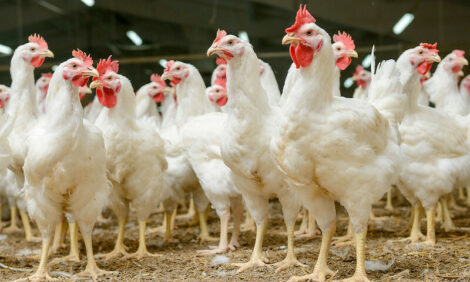



Ventilation Reduces Environmental Impact
DENMARK - A new smart ventilation system helps Danish livestock producers to overcome some of the environmental challenges that the industry faces. Scientists from Aarhus University are involved in the development of the system devised by MT Højgaard Agri.Unpleasant odours, ammonia emissions from livestock buildings and a high energy consumption pose significant environmental challenges for agriculture. In a new research project, scientists from Aarhus University are going to help develop a ventilation system which forms part of a new livestock housing concept designed by MT Højgaard Agri. The ventilation system reduces the environmental impact of livestock buildings by, among other things, reducing ammonia and odour emissions and lowering energy consumption.
"Emissions of CO2, ammonia, odour and dust are a permanent problem for the environment, for animal welfare and for the people working in the buildings. And this at the same time as agriculture is experiencing increasing demands for reductions in odour and ammonia emissions," says industrial post-doc Li Rong.
In addition to being a source of ammonia and odour, livestock buildings are also large consumers of energy, and 60 per cent of energy consumption in animal houses can be ascribed to ventilation and heating. The high energy consumption is detrimental both to the environment and to the farmer's economy.
"At a time of rising energy prices and increased focus on CO2 emissions, there is a need for measures to control energy use in livestock buildings, says Mr Rong.
The ventilation system, called SmartVent, combines mechanical floor ventilation with natural ventilation in a new hybrid system that can help create a better indoor environment in the buildings for the benefit of both animals and humans and also reduce the nuisance from odour emissions. The system is at the same time designed to use less energy in the provision of fresh air to the animals. In this way SmartVent will make a positive contribution to solving some of the key problems in livestock production.
"Part of the vented air is delivered directly to the animals' breathing zones and then sucked down through the floor slats, which reduces the air requirement and thus energy consumption and emissions of ammonia and odour," says Mr Rong.
By sucking air through the floor slats, most of the ammonia is recovered and the air can then be purified – in this way improving the indoor climate and significantly reducing ammonia emissions.
MT Højgaard Agri expects that SmartVent can reduce ammonia emissions and odour by, respectively, 75 and 50 per cent and energy consumption in livestock buildings by 40-60 per cent. The project will result in a significantly lower environmental impact and thus contribute to the positive development of agriculture.
The two-year project "Smart ventilation (SmartVent) for future livestock buildings - focus on environment, energy consumption and indoor air quality" is a collaboration between MT Højgaard Agri and Aarhus University and is funded by The Danish National Advanced Technology Foundation.








